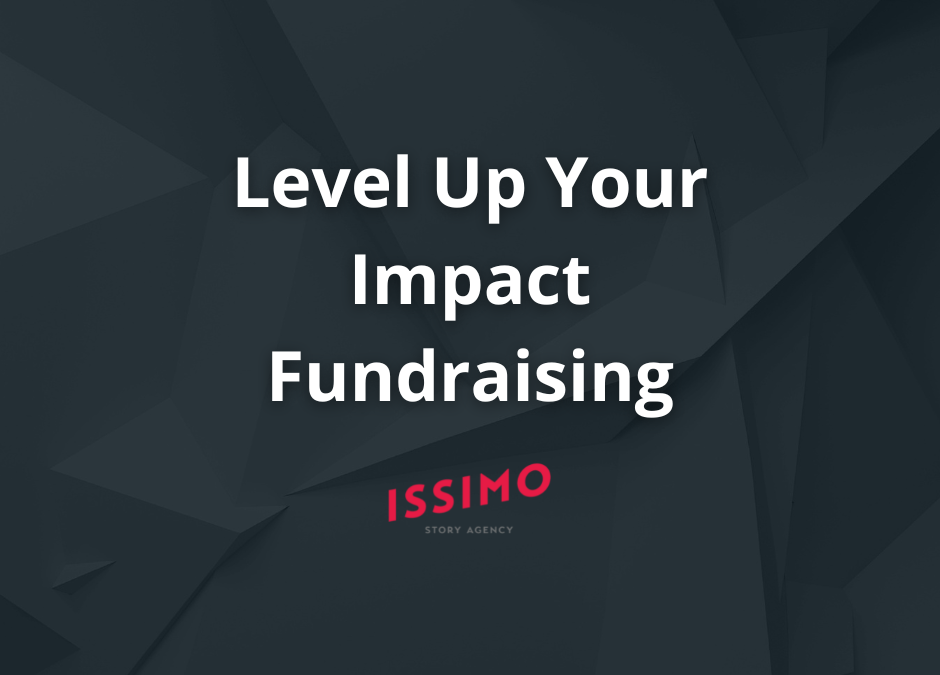Level Up Your Impact Fundraising by Telling the Right Story
In the impact fundraising world, it’s a common thought that if you only had more staff or a bigger budget that you could raise much more funds. But what if you could dramatically improve your fundraising with the same resources you currently have in your impact organization?
We recently conducted an attitudinal research study with participants from 34 countries and 158 organizations to learn about peer-based best practices and what leads to success. We found that having a bigger budget doesn’t always equate to raising more funds.
Going into the study, we expected to see differences between segments based on an organization’s size, with larger organizations achieving higher levels of success. However, between the three attitudinal segmentations of impact fundraisers we found, each had different sizes, investment approaches, fundraising targets and marketing budgets — from $25,000 to $1 million annually. And they all had different levels of fundraising success.
The big takeaway is that budget and size are less important to overall success than other elements. In today’s blog post, we’ll dive into how you can level up your impact fundraising with another approach, compelling storytelling.
Storytelling Is the Secret Sauce of Impact Fundraising
Four out of every five impact fundraisers agree that telling a compelling and consistent story about their organization would make fundraising more effective and efficient. They also agree it’s essential to invest in strong storytelling to attract the investors and donors they want to reach.
Among the participants in our research study who had the greatest success, we found they were far more likely to have a story that first made a strong business case for returns and impact (head) and had a strong brand and visual story (heart).
For impact organizations to be successful, they must be able to attract capital and inspire action. To do so, organizations must craft effective stories that appeal to both the head and the heart. But what does this mean?
The head is the logical side of what you do — facts, numbers, graphs and reports. The heart is the emotional component of the story, the elements that resonate with your audience on a deeply human level. When you don’t speak meaningfully to both the head and the heart, your storytelling effectiveness suffers.
When the head and the heart are present and woven together through your messaging, it shifts from telling a story to telling the right story.
Here’s an example of a real-life success story of an organization that got it right: One of our favorite nonprofits, NPower, helps veterans, women of color, and other disadvantaged populations get the training they need to obtain high-paying tech jobs. The organization relies entirely on donations, the lion’s share of which comes from their annual fundraising gala. With essentially the same budget they had been spending in previous years, we helped them double their fundraising at the gala through more effective storytelling.
Ask yourself: Do you have the head and the heart balanced throughout your brand story?
Clearly, impact fundraisers overwhelmingly see the value in storytelling, but only some are getting it right.
Different Respondents, Different Levels of Success
Three distinct segments emerged from the data: Confident, Aspiring and Struggling respondents. They each have differing perspectives, activities and success levels.
Confident Respondents
These respondents say their organizations are very good at fundraising and are considered thought leaders in their space. They say their organization does a good job at telling their story (including visually) and have the resources they need to reach investors compellingly. In addition, their organizations demonstrate alignment because everybody within the organization understands the mission and vision. Therefore, everyone agrees on the brand story and how to tell it consistently.
Aspiring Respondents
These respondents say their organization is less likely to be consistent about reflecting their brand story to be successful in impact fundraising. However, they say it’s important for their organization to be a thought leader in their space. They believe mission-driven investing is more popular than ever and that investing in marketing is important to engage investors. These respondents have a positive outlook on fundraising investors and donors and say these external stakeholders are more likely to give to mission-driven organizations in order to make the world better.
Struggling Respondents
Struggling respondents see significant gaps between where their organizations are and where they should be regarding impact fundraising — more than the Confident and Aspiring segments. They say their marketing is much less impactful than it should be because they rely on old-fashioned fundraising approaches. Their organizations do the same marketing activities year after year, and they wish they would change their approach to better reach investors and donors. However, they also recognize that they have more to learn about effective marketing, successful fundraising and thought leadership.
Identifying Your Attitudinal Segment
In order to tell the right story that balances the head and the heart, you must start first by identifying which attitudinal segment your organization most closely identifies with. Rate your organization as low, mid or high on the following characteristics:
- Internal message alignment: Does everybody in your organization have the same understanding of your messaging? Is the brand story strong enough for everyone, regardless of department, role or tenure to share with others compellingly?
- External message clarity: Are external stakeholders receiving the same messaging as internal stakeholders? How well do they understand your message? How strong is the story when you communicate it outside your organization?
- Fundraising adaptability: Has your fundraising approach evolved? How well did your fundraising adapt to COVID-19? If a fundraising push underdelivers, do you repeat the same strategies and tactics or change them to achieve better results?
- Fundraising success: Does your organization reach its fundraising goals? Can it acquire the funds it needs to focus on making an impact? How effectively is your messaging inspiring investors and donors to contribute to your mission?
You may be in the Confident segment if you give your organization mostly high ratings among these four categories. That means you have the pieces to achieve fundraising success but may still need to refine your storytelling. Take some time to assess how much head and heart you incorporate into your storytelling. Think of great stories as the wind in a sail. They are intangible and can feel temporary, but their impact can drive something much more significant
If you give your organization mid-level ratings on the above, you may be in the Aspiring segment. Your organization understands where it needs to go but has yet to get there. You believe in the power of marketing and storytelling and want to reach investors and donors that connect with that message. If you see the solution as a lack of resources, like staff. Instead, look to refine your messaging. Think of it like a game of telephone. Consider whether your message maintains its integrity throughout your organization and outward to external stakeholders.
If your organization is on the lower end of the rating scale, you could be in the Struggling segment. Fundraising success can be achieved by organizations of any size or reach. But your starting point is your brand story. Without clarity and consistency in messaging, it can be overwhelming to decide the next steps.
As G.I. Joe said, knowing is half the battle. Knowing where your organization falls in these fundraising segments is just a start. In our next blog, we’ll dive into how you can tell your story in the right way with tactics to help you get there.
To learn more about each segments’ behaviors and how you can tell the right story, check out our entire executive summary. And to explore the data yourself, check it out here.

